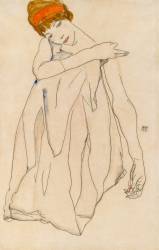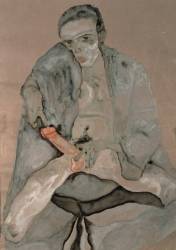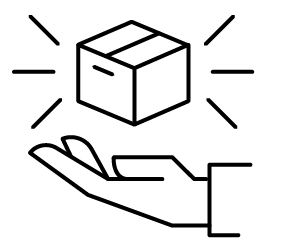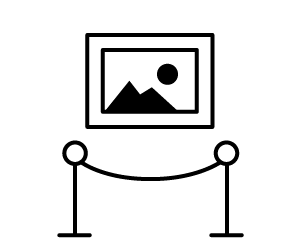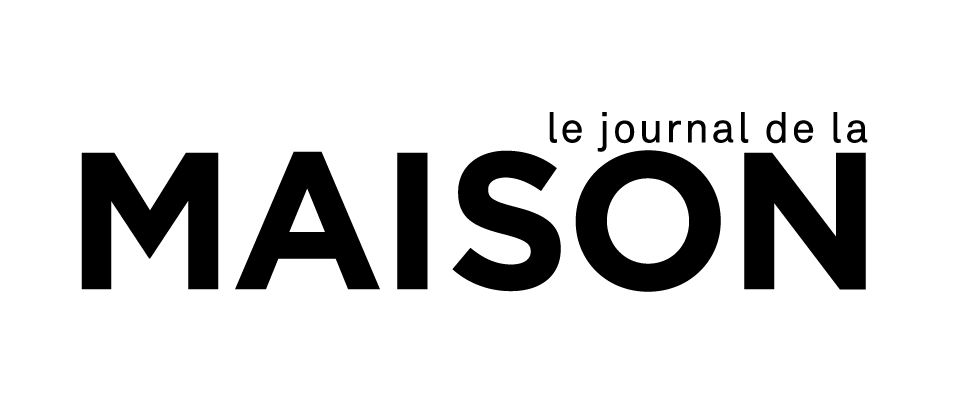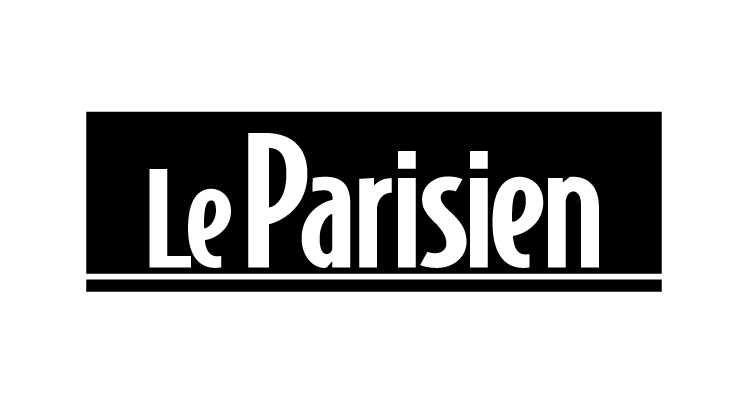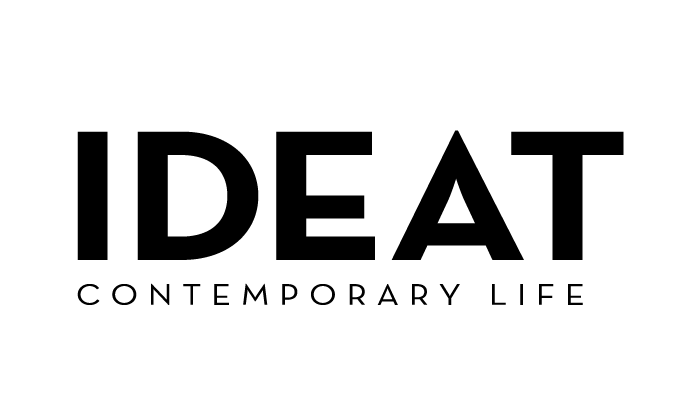Artwork of Egon Schiele
A painter, draughtsman and engraver in his spare time, Egon Schiele is undoubtedly one of the Expressionist painters who has most influenced the art world to this day. Mainly known for his egocentric painting, with his self-portrait, which he painted in all shapes and forms, but also for his nudes, his depictions of women and young children, his still lifes and his portraits, he was able to exacerbate his feelings in an intense way, by creating representations with perfect lines, which he worked on to bring out all their expressiveness.
Discover the world of the artist available in the catalogue, with his painting "Autumn Trees", oil on canvas from his many landscapes, his pencil and watercolour drawing "Nude Girl with Black Hair", with its clear line and the erotic posture of its subject, representative of the artist's work, or his canvas "Self-portrait and Fruit", oil and gouache painting on wood from his plethora of self-portraits painted throughout his career.
Treat yourself to reproductions of paintings by the great Viennese symbolist and expressionist painter, recognised as one of the masters of this pictorial movement of the late 19th and early 20th centuries, and discover his biography.
Biography of Egon Schiele.
The beginnings of Egon Schiele's career.
Born in 1890 in Tulle an der Donau in Hungary, Egon Schiele came from a family whose father worked in the railway industry, as a stationmaster, and was from the petty bourgeoisie, typical of civil servants at that time in the country. Despite his father's reticence about his vocation as an artist - Schiele had an innate talent for drawing on paper from an early age - the future expressionist painter nevertheless developed a strong relationship with his father, as well as with his sisters, particularly Gerti, his youngest daughter, much more so than with his mother, with whom his relationship fluctuated throughout his life. Egon Schiele was deeply affected by the death of his father in 1905, and he brought his father to life through his art, producing his first self-portraits in a style similar to that of a householder.
The formative period for Egon Schiele.
In 1906, having been quickly spotted by several painters in Viennese society, the young Austrian artist took lessons, first at the grammar school in the Austrian town of Klosterneuburg, with Ludwig Karl Strauch, then at the School of Applied Arts in Vienna, before entering the Academy of Fine Arts in Vienna, where he graduated with honours, becoming the youngest student in his class. At the Beaux Arts, where he stayed for 3 years, he studied academicism and the great masters of classical painting. However, at the beginning of the 20th century, at a time when Post-Impressionism and the Viennese Secession were in full swing, Egon Schiele did not like this classicist style of painting. In parallel with his training, he began to paint less conventional subjects that were rather provocative for the time. But it was from 1907 onwards that he became fascinated by the compositions of Gustav Klimt, who was to become his mentor, and who themselves were derived from the decorative arts and art nouveau. Adopting this decorative style, which was close to the iconography advocated by Klimt, Schiele began to produce portraits, self-portraits and a few still lifes, which led him to exhibit at the Kunstschau in Vienna in 1909, an art exhibition organised by Gustav Klimt and Josef Hoffmann, where many of the major artists of the European avant-garde and the secession exhibited, including Vincent Van Gogh, Gauguin, Matisse and Vlaminck.
Egon Schiele: A unique style and decried compositions.
Between 1909 and 1910, Egon Schiele felt that he had come to terms with the aesthetics associated with Klimt's work, and chose to develop an aesthetic all his own, based on egocentric thinking. Turning to an increasingly exacerbated expressionism in his drawings and paintings, he displayed an arrogant personality, seeing himself as endowed with a prophetic word, like a true visionary of art. It was during this period that he developed his watercolour technique, produced a large number of sketches and painted one of his self-portraits, with the anatomy of the body increasingly abstract, a far cry from the classical art taught during his studies. His paintings were also, for him, a gateway to onanism and the expression of his desires repressed by a conservative society, and his production of erotic drawings, self-portraits and portraits imbued with sensuality, even pornography, was increasingly numerous.
A time of scandal: Egon Schiele's work condemned.
Egon Schiele was increasingly attracted to artistic subjects and approaches that departed from the conformism of society, and he produced more and more nudes, first of women, then of children, which he displayed unashamedly in his drawings on paper. Although this indecent act remained confidential while the artist lived in Vienna, where child prostitution was rife in the poorer districts, it got him into trouble when he moved to a house in Krumau, his mother's home town, and then to Neulengbach, a small town in the Austrian countryside. As he continued to draw young teenage girls, it wasn't long before a sexual scandal broke out. Schiele was living in a common-law relationship with Wally Neuzil, a 17-year-old woman whose portrait he painted many times, in drawings on paper as well as in watercolours and oil on canvas. He was also visited by Tatjana von Mossig, a 13-year-old girl who had run away from home and was in love with the painter. She was taken in by the couple for the night, before being brought back to Vienna by Wally, and Tatjana's father filed a complaint for statutory rape. In view of Schiele's reputation and the many drawings of naked children's bodies in the house, the painter was detained for several weeks at the Sankt Polten prison, before being released on the sole charge of indecent assault. Denouncing this conviction as the "murder of art and the artist", and supported by a whole population of artists and critics close to the Expressionist movement, Egon Schiele emerged from this ordeal as a martyr.
Egon Schiele emerged from introspection.
After his trial and his time in prison, Egon Schiele was scarred and painted and displayed a series of self-portraits of himself, flayed alive, as if to express his indignation at the treatment his art had received, and the incursion into his private life. Still in a relationship with Wally, who firmly supported him but from whom he tried to distance himself artificially in order to retain his freedom, Schiele painted against the political and religious morality of the country, but gradually left his introspective stance and began to modify his ideal, choosing to take into account the feelings of the public, who were often more conservative than the Austrian painter. Around 1912, Schiele stopped drawing children, his exaggeratedly erotic nudes became less impertinent, the nude young woman gave way to portraits of more mature women, and realism began to reclaim its rights, with more conforming proportions. Despite these changes, symbolism remained present in Egon Schiele's canvases, in a more colourful style derived from Fauvism and German Expressionism, and several renowned collectors, such as Franz Hauer and August Lederer, took an interest in the painter, whose reputation had increased following a number of scandals. Schiele was even exhibited alongside the Blue Rider artists at the Hans Goltz gallery in Munich. This did not prevent the painter from suffering from money problems, as his exhibitions remained confidential, despite being exported to other European cities such as Paris, Brussels and Rome, and his lavish lifestyle led to colossal debts.
Recognition of Egon Schiele and a return to naturalism.
Egon Schiele: A premature end to a life of work with a strong legacy.
Learn more about the life and the works of Egon Schiele.



































